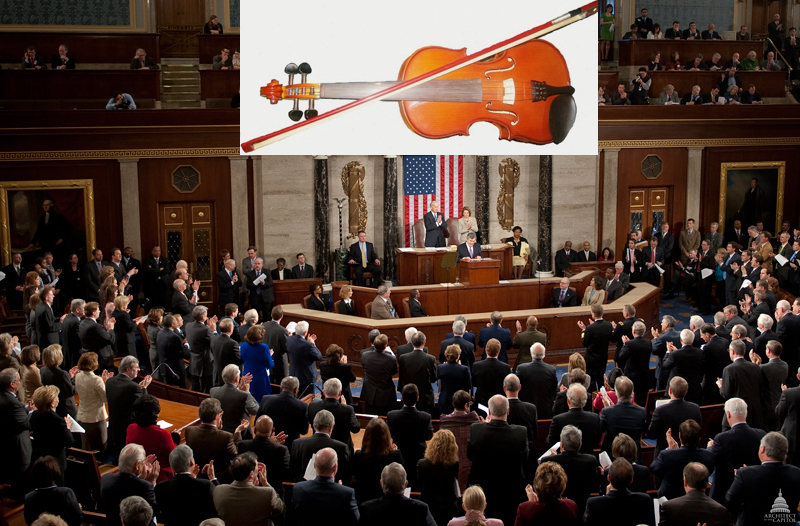DECEMBER 9, 2022 – By way of background, I don’t mean to cast aspersions on the nation’s high school orchestras. Readers “in the know” already know that that statement relates to “standards.” Readers not “in the know” will have to bear with me for a bit of explanation.
Whereas “bands” comprise winds, brass, and percussion instruments, “orchestras” are mainly, though by no means exclusively, the realm of stringed instruments—violins, violas, celli and basses.
At the highest level of virtuosity, differences in difficulty among band and orchestra instruments narrow considerably, but at entry, intermediate and even advanced student levels of proficiency, stringed instruments (“strings” for short) are generally much tougher—for both player and listener—than wind, brass or percussion instruments. And among the strings, violin is considered the most demanding, mostly because of the repertoire, though I’m sure violists, cellists and bassists would quibble with me over this.
When I was attempting to be a serious violinist, a fellow violin student remarked after a particularly sobering lesson, “Violin is the easiest instrument to sound bad on.” When I told this to a fellow parent after our kids’ school orchestra concert, he said, “Wrong. It’s the cello.” His kid played cello.
Where I’m going with all this is that in quality, your typical high school band or choir is almost always superior to your average high school orchestra. Back in the day, I used to enjoy our kids’ band and choir concerts. The students had a decent command of their voices and instruments and their directors were quite good at optimizing the pieces, both technically and musically. But when it came to orchestra performances . . . Oooo!; sometimes, downright, “Ouch!”
Of course, many metro areas boast superb youth orchestras, the members of which are diamonds mined from “average” high school orchestras in the area. I’ve heard these ensembles—and conservatory bound or aspiring individuals among them. Performances are edifying and worthy of enthusiastic applause.
On balance, however, you don’t go to a typical high school orchestra concert expecting your socks to be knocked off.
Now to politics. It’s hard not to cringe if you’ve got standards applicable to the assessment of information, logic, decency, integrity, pragmatism and analytical thinking. On both sides of the electoral process—the electorate and the elected—there’s lots of thought and talk that’s absolutely . . . mediocre. And of course, there’s plenty more that’s “Ooooo!; sometimes, downright, “Ouch!”
In fact, so “Ouch!” that it messes with a rational person’s mental condition and digestive system. But what if we were to view the American electoral process as an average high school orchestra? Things would go down much more smoothly if we simply lowered our expectations to more realistic levels; if we approached electoral politics as we enter the high school auditorium for an orchestra concert. It ain’t the band and its not the award-winning chorus. It’s the orchestra, whose members are doing the best that can be expected when playing the “easiest instruments to sound bad on.”
And when a kid bound for Juilliard marches out on stage for the spring concert of her high school orchestra and nails a movement of Lalo’s Symphonie Espagnole—or when a true statesperson delivers an uplifting speech from the campaign trail or floor of the House or Senate—you think, “Wow! What a great country we have . . . after all!”
(Remember to subscribe to this blog and receive notifications of new posts by email.)
© 2022 by Eric Nilsson
